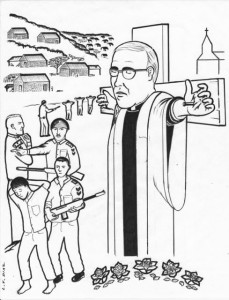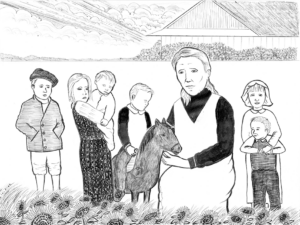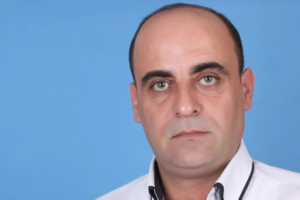Martyrs for the Faith – Then and Now
Some of the most well-known martyrs who died for their faith are from the earliest years of the Church – beginning with Jesus the Christ himself and then Stephen and many others martyred in Roman times. Over the centuries, Christians have continued to face persecution and martyrdom. Those who have received what is known as the crown of martyrdom—killed for their faith—are saints of the Catholic Church.
A recent scholarly book published by the University of California Press documents the history of martyrdom and the devotion that the deaths inspired among the faithful from the beginning of Christianity up until the Reformation. The Cult of the Dead: A Brief History of Christianity provides not only details of the deaths of many martyrs, but also the devotions that followed them and the efforts of Bishops and monks not only to preserve the bodies, to publish the truth of their lives and deaths, but also to verify that the bodily remains which are venerated have been correctly documented. Many fascinating stories are recorded in the book.
More Recent Martyrs
This article will feature briefly the stories of some of the more recent martyrs, after the centuries covered in The Cult of the Dead. There are so many. Here are only a few.
Bishop Rolando Alvarez
The news that the Nicaraguan government sentenced Catholic Bishop Rolando Alvarez to 26 years in prison has reminded us of the centuries of martyrdom of those who follow Jesus and stand with his people. Bishop Alvarez is a martyr even though he is not yet dead. Bishop Alvarez’ amazingly lengthy sentence is a part of the persecution of the Catholic Church in Nicaragua.
Bishop Alvarez was offered a split-second decision by the Ortega regime to flee and abandon his country. He chose to remain with his people and was sentenced to what may very well be a death sentence. Bishop Alvarez is 56 years old; it would be surprising if he survived 26 years in a prison noted for appalling conditions. He would be 82 if he were released at the end of his sentence.
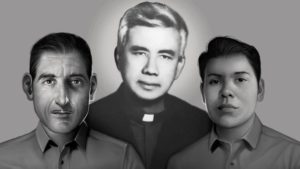 Rutilio Grande, SJ, and Companions
Rutilio Grande, SJ, and Companions
Seventy-five thousand persons died in El Salvador between 1977 and 1989, most of them at the hands of government soldiers and hit squads, according to a United Nations-sponsored Truth Commission report.
Jesuit priest Rutilio Grande was killed in 1977 during the time my husband Mark I were living in El Salvador with our two children. We participated with a small Christian community there, based on Fr. Rutilio’s model – a group of the faithful studying the Bible and what the words of the Bible meant for their lives. Those groups were soon forbidden by the government during our time there.
Fr. Rutilio Grande was assassinated on March 12th 1977 together with his sacristan, Manuel Solorzano and young assistant Nelson Lemus. They were shot by a death squad as they drove to celebrate Mass in the village of El Paisnal. Rutilio, with a team of young Jesuits, had promoted programs of conscientization and established a network of basic Christian communities following the directives from the Medellin Conference of Latin American Bishops. Fr. Rutilio preached and spoke with passion and clarity about the injustices suffered by the rural population and he stood with them as they organized to seek land reform and social development.
Archbishop Oscar Romero
Archbishop Oscar Romero preached love and nonviolence, agrarian reform and a better wage for farm workers, but was maligned and criticized by those who wanted to keep the status quo. It was a time when death squads roamed the streets and dead bodies were being found everywhere, thrown in garbage dumps. Archbishop Romero personally saw the carnage, facing down the military to claim bodies.
It was his very last sermon that precipitated Oscar Romero’s death. His insistence on soldiers’ laying down their arms was too much for powerful people in the government, the military, and the wealthy landowners. In that homily he addressed the men of the army, the Guardia Nacional, and the police, and asked them to refuse to shoot:
“Brothers, you are part of our own people. You kill your own campesino brothers and sisters. And before an order to kill that a man may give, the law of God must prevail that says: Thou shalt not kill. No soldier is obliged to obey an order against the law of God. No one has to fulfill an immoral law. It is time to recover your consciences and to obey your consciences rather than the orders of sin. The church, defender of the rights of God, of the law of God, of human dignity, the dignity of the person, cannot remain silent before such abominations. In the name of God, and in the name of this suffering people whose laments rise to heaven each day more tumultuous, I beg you, I ask you, I order you in the name of God: stop the repression!”
Monseñor Romero was shot in the heart the next day as he celebrated Mass.
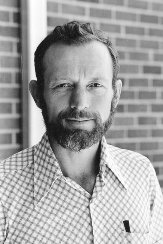 Blessed Stanley Rother of Oklahoma
Blessed Stanley Rother of Oklahoma
While Fr. Stanley Rother served in Guatemala, a civil war raged between the militarist government forces and the guerrillas. The Catholic Church was caught in the middle due to its insistence on catechizing and educating the people. During this conflict, thousands of Catholics were killed. Eventually, Father Rother’s name appeared on a death list.
Three men entered the rectory around 1 a.m. on July 28, 1981, fought with Father Rother and then executed him. His death shocked the Catholic world. No one was ever held responsible.
The people of Santiago Atitlan, Guatemala, mourned the loss of their leader and friend. They requested that Father Rother’s heart be kept in Guatemala where it remains enshrined today.
“When they kill me, don’t cry…light the Paschal Candle and put up the Easter banner.” -Fr. Stanley Rother
 Miguel Augustine Pro Juárez, SJ (1891-1927)
Miguel Augustine Pro Juárez, SJ (1891-1927)
At the end of July 1926 the government of Mexico suppressed all public worship and closed the churches. Every priest became a hunted criminal. Faithful Mexicans, however, still sought the sacraments, so Fr. Miguel Pro continued his ministry in secret. He established stations in various parts of Mexico City and visited them regularly in disguise to preach and offer the sacraments. The young Jesuit lived without fear and carried on his priestly ministry until November 1927. Soldiers escorted the unsuspecting Jesuit priest into the prison yard the morning of Nov. 23. When he saw the spectators and the firing squad, he asked for a few moments to pray, and then refused the blindfold when it was offered. Holding his rosary in his hand, he stood in front of the bullet-chipped wall and stretched his arms out in the form of a cross. When the order came to fire, he cried out, “”Viva Cristo Rey! Long live Christ the King.”” Pro’s father claimed the body and had a wake in the family home; thousands of workers as well as soldiers came by to see the martyr’s body.
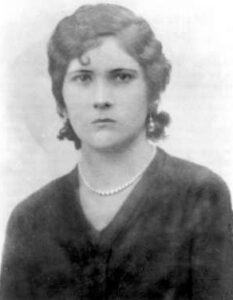 María de la Luz Cirenia Camacho, Cristera Martyr of Coyoacán, Mexico City
María de la Luz Cirenia Camacho, Cristera Martyr of Coyoacán, Mexico City
On Sunday, December 30, 1934 Maria de la Luz Camacho died in her parish of San Juan Bautista in Mexico City. She died at age 27 a martyr, defending the Church and the Faith, shot by her executioners. She died at the same time that she cried out: Viva Cristo Rey! Long Live Christ the King. María de la Luz was a catechist, a Third Order Francisco and a member of Catholic Action in México. On December 30 the priest asked the people to spread the Word that the Red Shirts had arrived to attack and burn the parish. Maria de la Luz left her house and arrived at the parish where the Red Shirts were arriving with tanks of gasoline, shouting against the Church and blaspheming. Maria de la Luz stopped in front of the door of the church, opened her arms as a cross and began to cry out “¡Viva la Iglesia! ¡Viva el Papa! ¡Viva la Virgen de Guadalupe! ¡Viva Cristo Rey! (Long Live the Church, Long Live the Pope, Long Live the Virgin of Guadalupe, Long Live Christ the King!) until the sound of the shots swallowed up her voice. As she lay dying, she received the last Sacrament. [by Roberto O’Farrell]
Edith Stein (Sister Benedicta of the Cross)
Philosopher and Jewish convert to Catholicism Edith Stein took the name of Teresa Benedicta of the Cross when she entered the Carmelite religious order. Because of the Nazi persecution of Jewish people, Sister Benedicta and her biological sister Rosa, by then also a convert and an extern (tertiary of the Carmelite Order, who would handle the community’s needs outside the monastery), were sent to the Carmelite monastery in Echt, Netherlands, for their safety. In response to the pastoral letter from the Dutch bishops on July 26, 1942, in which they made the treatment of the Jews by the Nazis a central theme, all baptized Catholics of Jewish origin (according to police reports, 244 people) were arrested by the Gestapo on the following Sunday, August 2, 1942. They were sent to the Auschwitz concentration camp, where they were murdered in a gas chamber on August 9, 1942.
 Zenovij (Zenon) Kovalyk, Ukrainian priest (Redemptorist)
Zenovij (Zenon) Kovalyk, Ukrainian priest (Redemptorist)
Zenovij (Zenon) Kovalyk joined the Redemptorists and professed vows in 1926. He studied philosophy and theology in Belgium and was ordained in 1932. Zenon was a fearless preacher of God’s Word and lover of the Mother of God. He was arrested by the Soviets in 1940. While in prison he continued his pastoral ministry among the prisoners.When the Soviet prisons were opened on the arrival of the invading German army, Father Zenon’s body was found crucified to a wall of the prison of Zamartynivska in 1941.
Józef and Wiktoria Ulma and their seven children
Józef and Wiktoria Ulma and their seven children were killed by the Nazis for hiding a Jewish family in their home in Poland. They will be beatified as martyrs on Sept. 10, 2023. Early on March 24, 1944, a Nazi patrol surrounded their home in Poland. They discovered eight Jewish people who had found refuge on the Ulma farm, and executed them. The Nazi police then killed Jósef and Wiktoria, who was seven months pregnant. They also shot the children: Stanisława, age 8, Barbara, 7, Władysław, 6, Franciszek, 4, Antoni, 3, and Maria, 2. The World Holocaust Remembrance Center has honored the Ulmas as Righteous Among the Nations for the sacrifice of their lives.
Blessed Mariam Vattalil (Sister Rani Maria)
Killed “in hatred for the faith,” Blessed Mariam Vattalil has become a beautiful witness for the Church in India.
Born to a simple peasant family in 1954, Mariam Vattalil joined the Franciscan Clarist Congregation. After entering she assumed the name Rani Maria and professed her solemn vows in 1980. Sister Rani Maria wanted to become a missionary and served several poor communities in India.
She worked with the poor, oppressed and marginalized in the region of Indore. According to the Franciscan Clarist Congregation, “The developmental programs in which she was engaged for the poor tribals went counter to the vested interests of the unscrupulous moneylenders and social exploiters; she became the object of their hatred, which grew steadily in step with the progress of the poor. And her enemies decided to get rid of her.”
In particular Sister Rani Maria worked against a type of bonded labor that is a modern-day form of slavery. The local money lenders and feudal lords saw her work as a threat to their institutions and decided to hire an assassin to kill her. They hired a man named Samandhar Singh, who followed her and boarded a bus she was riding on in order to kill her. Singh stabbed her then and there in broad daylight and Sister Rani Maria’s last word was “Jesus.”
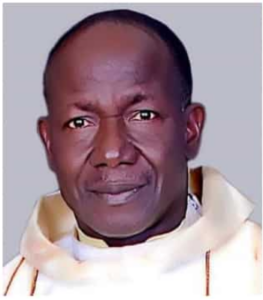 Fr. Isaac Achi is Killed, Nigerian martyr
Fr. Isaac Achi is Killed, Nigerian martyr
On January 15, 2023 a group of armed bandits forced their way into the parish rectory of SS. Peter and Paul Parish in the northern Nigerian village of Kafin Koro. Amid shouts of “Allahu Akbar,” the gunmen gained access to the sleeping quarters of two priests, Fr. Collins Omeh and Fr. Isaac Achi. Omeh was shot in the shoulder but managed to flee. Achi was shot in the chest and left to bleed to death as the terrorists—later claimed by the Islamist group Boko Haram—set fire to the premises and escaped. [Source: Commonweal February 2, 2023]
The Ecumenism of Blood
Pope Francis highlighted the plights of persecuted people around the world when he said that “They are witnesses to Jesus Christ, and they are persecuted and killed because they are Christians. Those who persecute them make no distinction between the religious communities to which they belong. They are Christians and for that they are persecuted. This, brothers and sisters, is the ecumenism of blood.”
Martyrs of Other Faiths
Nizar Khalit Muhammad Banat – Palestine
Some are martyred as they seek justice and peace for their people, including some of other faiths. We include here Nizar Khalit Muhammad Banat.
John Howard, volunteer at Casa Juan Diego, recently spent several months in Palestine. His testimony: “We met with Gassan Banat the brother of Nizar Khalit Muhammad Banat, who had been foreseen as the obvious candidate to be the next head of the Palestinian Parliament in the election of 2021. He had been arrested a dozen times and never charged with a crime and was released but severely bullied. His face was put on pictures of animals, his house was shot up and a fierce propaganda campaign was unleashed against him. He was so popular partially for assailing the Palestinian Authority’s corruption on social media that they were afraid of losing. The elections were cancelled in March of 2021. On the night of June 24, 2021, fourteen members of the Fatah party who run the P.A. broke in and took him to jail where he was beaten to death. Nizar left a wife and five children in Hebron.”
The Paschal Mystery – Death to Resurrection
Sometimes people have commented that Catholics over the centuries have emphasized the Cross, the suffering and death of Jesus too much, and have not put enough emphasis on the Lord’s Resurrection. Theologians of Vatican II helped to restore the balance with the theme of the Paschal Mystery, the Lord’s passage from death to life. However, we cannot celebrate the Resurrection without remembering the Lord’s suffering and death and the suffering and death of the followers of Jesus, the martyrs and so many who suffer in other ways. The old maxim so often quoted in families of “Offer up your suffering” is not out of date.
The Lord’s presence is made visible to us through the saints and martyrs. As Donna Rosario, one of the characters in Caryll Houselander’s novel The Dry Wood, says: “Since our Lord has ascended in glory, we can only see him in his shadow cast on the road under our feet, by His saints.”
The saints and martyrs remind us of what really matters. Maurice Blondel decries the image of the Christian who is “someone like anyone else with a few more duties, a few beliefs, or a few practices added on in order to obtain, through a sort of life insurance on the next life, an honorable retirement.” As Blondel also says, “It is not in word alone or by only some sleight of hand that God wants to unite us in his perfection and to his felicity, it is entirely in reality and at the most just cost, without which we would be only copies, reflections, not living members of Christ living in us.” (Maurice Blondel, Philosophical Exigencies of Christian Religion (University of Notre Dame Press.) The martyrs knew.
Houston Catholic Worker, April-June 2023, Vol. XLIII, No. 2.


